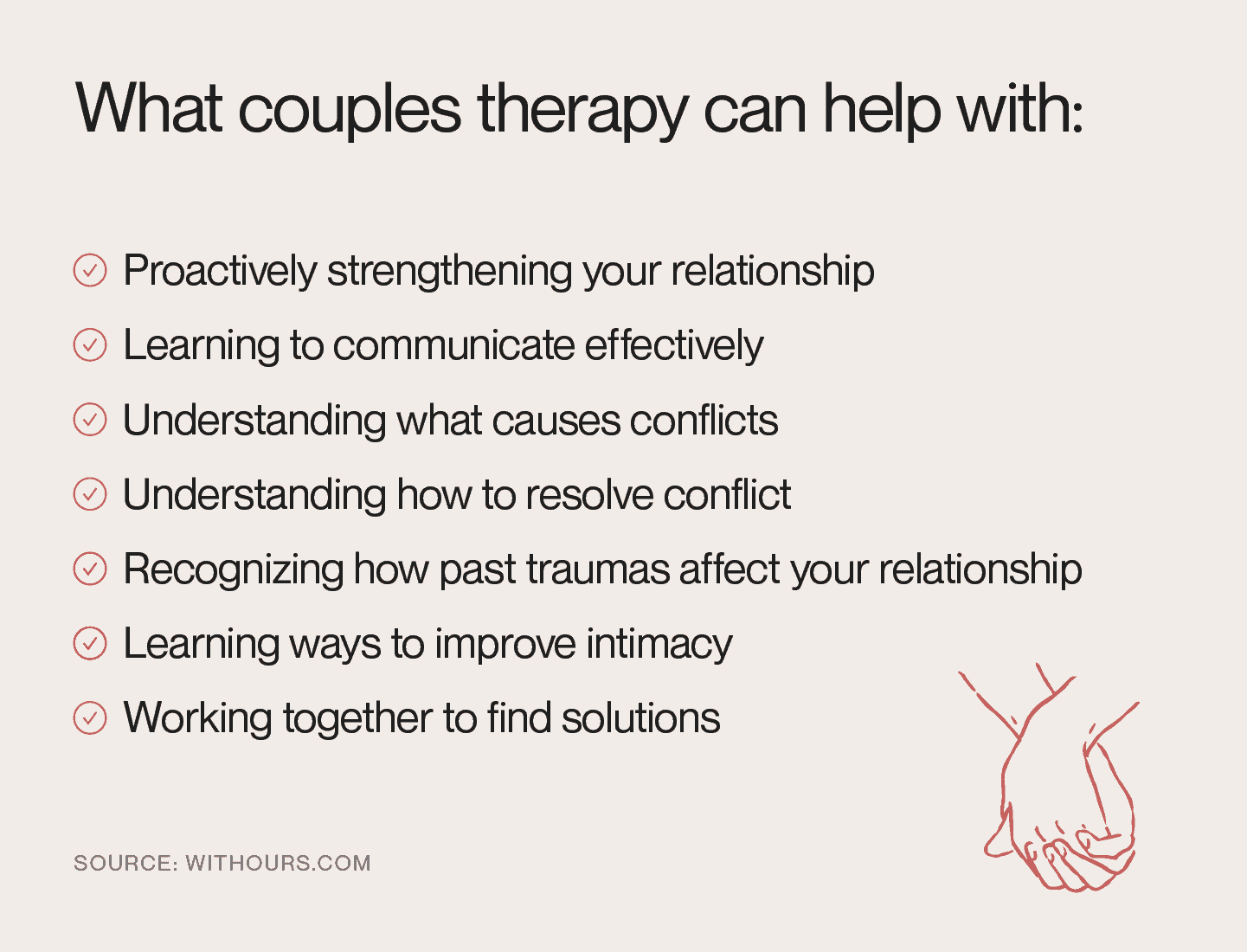The Aim Point Counseling Ideas
Table of ContentsThe 5-Second Trick For Aim Point CounselingAbout Aim Point CounselingThe Best Strategy To Use For Aim Point CounselingAn Unbiased View of Aim Point CounselingHow Aim Point Counseling can Save You Time, Stress, and Money.The Ultimate Guide To Aim Point Counseling
The longitudinal layout involves a pre-treatment survey and two follow-up studies at 3- and 12-months post-intervention. The research is set in 8 Relationships Australia Victoria centres, throughout cosmopolitan, outer suburbs, and regional/rural websites. Relationships Australia, a non-government organisation, is the largest provider of couple counselling and connection solutions in Australia.
In Australia, the average length of marriage before splitting up is 8.8 years, and around fifty percent of all separations entail pairs with youngsters [1] These high prices of connection breakdown have actually been regularly related to unfavorable health repercussions for both adults and kids following divorce/separation. These consist of isolation from assistance networks, and minimized income and requirement of living for both grownups and youngsters [3], problems of commitment over kids for men, and anxiety and loss of identification for women [4,5]
5 Easy Facts About Aim Point Counseling Described
The impacts of divorce and separation can be detrimental, research study shows that high relationship disharmony in undamaged pairs is also most likely to have unfavorable end results.
Additionally, aspects that affect the outcomes of these services need detailed examination. Research to date has identified both couple and individual elements that may add to relationship disharmony. These consist of connection satisfaction and commitment at the couple level, and clinical depression at the private level. Nevertheless, robust research to evaluate relationship-enhancing treatments in the area are limited.
5 Easy Facts About Aim Point Counseling Shown
Partnership contentment has actually been the most typical end result variable recognized in greater than 200 examinations of pair therapy [11,12] Researches have located considerable enhancements in relationship contentment from pre- to post-treatment [13,14] and over the program of one to 2 years following coaching [15] In these studies, connection satisfaction was most often analyzed using the Dyadic Modification Scale (DAS) [16] While many research studies show renovations in partnership complete satisfaction complying with couple therapy, they are restricted by the examples and procedures made use of, mainly short-term follow-up time structures, and analyses that do not account for the dyadic nature of couple data., is one more commonly examined relationship outcome.
To sum up, research study indicates that couple-specific variables along with individual variables may forecast the end results of couple counselling and partnership solutions. The causal direction of these relationships, nevertheless, is much less clear. These monitorings are essential, because, to justify and direct the application of relationship solutions such as couple counselling, empirical proof needs to explore both the end results of relationship solutions and the variables that anticipate successful treatment.
There is an expanding consensus that efficacy researches must be enhanced by efficiency study to best notify clinical method [ 29] The minimal efficiency study that exists to day suggests that couple coaching can improve end results such as relationship fulfillment [33,43], interaction skills and general well-being [44], at the very least in some European nations.

We currently recognize little regarding the profiles of pairs that look for out partnership education and learning compared with those who look for connection coaching, or the results of these programs. Unscientific evidence recommends that there might be significant distress amongst at least some couples seeking relationship education.
See This Report on Aim Point Counseling
Responses entails individuals completing sets of questions about their partnership (e.g. measures of social issues), and obtaining info on what their ratings indicate. Cognitive-behavioural techniques advertise altering cognitions to assist in favorable partnerships.
These effects have lingered for up to 4 years in some studies [47] These meta-analyses highlight limitations in the present literary works on relationship education. Particularly, the bulk of researches entailed pairs from top socio-economic backgrounds who were not experiencing high connection dissonance [47,48] This example account might not stand for customers that usually offer for partnership education and learning.
The Single Strategy To Use For Aim Point Counseling

Really little research has taken a look at the relative advantages of pair therapy and connection education programs. As customers are most likely to self-select right into these solution kinds, it is not clear whether particular connection distress profiles present per service type, or certainly whether there is an interaction between presenting profile, service kind and end result.
(https://pastebin.com/u/a1mpoint)
Thus, we have actually included a 12-month follow-up to gauge longer-term trends and results. The study makes use of a number of standard result measures considering that some prior investigations have actually been criticised for their lack of standard evaluation [50] The usage of analytical analyses that presume freedom of information, such as t-tests, or ANOVAs, has been widespread in previous studies [ 44,49]
We propose to use multi-level statistical modelling treatments that manage for the inter-dependence of pair data to evaluate any kind of therapy effects. The particular objectives of the ECC research are to: 1. Map accounts of customers looking for community agency-based couple coaching vs. partnership enhancement programs in terms of socio-demographic and relationship indicators (such as connection contentment, relationship commitment, interpersonal problems, and reasons for attending), as well as health (such as anxiety, general wellness) and wellness solution use (eg.
2. Establish whether pair coaching and connection education solutions improve three- and twelve-month outcomes for partnership satisfaction, dedication, and clinical depression, making use of analytical analyses appropriate to pair information. 3. Figure out Our site the family member contributions of client factors (individual and pair) and therapy/education elements to outcomes at 3- and 12-months, and to sustainability of end results gradually.
Some Of Aim Point Counseling
Multi-level modelling to establish pre-post distinctions, controlling for dyadic (couple) degree. To contribute to the literature examining the performance of community-based pair coaching. The outcomes will certainly aid clinical decision-making in community-based relationship service settings, and expert training. 3. To figure out the family member contributions of client/couple and therapy elements to end results at 3- and 12-months, and to sustainability of end results with time.